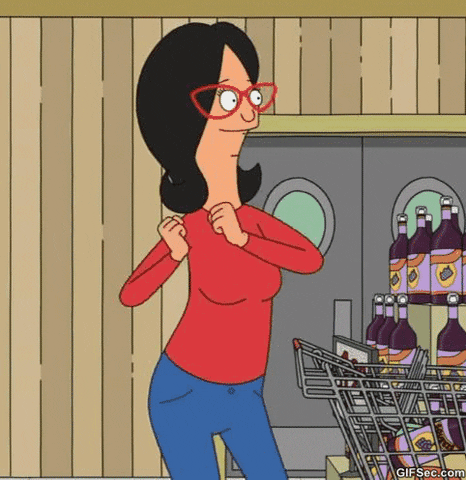Nice write up on the new HoD corks, on FB
Naegerbomb!
Copy/paste? Love me some
Naegerbomb cork erotica.
"Our VP of Sales, James Naeger M.Sc., is also our quality control manager, packaging manager, and a meadmaker. We wear a lot of hats around here. Before James joined the team at Schramm's Mead, he was a research scientist working on his Master's of Science in Biology at Wayne State University. His dedication to quality led him on a quest to find some of the world's best corks. Here are his results:
---------------------------------------------------
Schramm’s Mead is proud to announce that we have made a substantial packaging improvement. In the interest of utilizing a closure commensurate with the quality of our product, Batch Five of “The Heart of Darkness” has been sealed under 49 mm Flor Grade natural corks from PortoCork, which have been screened using the NDtech® process.
Cork has been in use for thousands of years and is still the premiere closure for fine wines, in the opinion of this meadmaker, and many other winemakers around the globe. Consumer preference for natural cork-stoppered wines is and always has been high in many of the greatest wine-producing countries in the world, such as France and Spain. Schramm's Mead currently uses 45 mm Super Grade natural corks for the other meads in our entire lineup. For meads made in the Schramm’s style, these corks will provide 15-20 years of top-tier aging potential, if the bottles are kept on their side in a space with a stable temperature near 55°F and humidity around 50-70%, e.g. a basement or wine cellar. A Schramm’s-style melomel will improve dramatically with time and proper aging.
We don't filter any of our meads, we don't pasteurize them, we don't add sulfites, sorbates, or other preservatives, and we don't boil our honey must. We only use the highest-quality ingredients possible, and we treat them with care. Our goal is to provide you with the most flavorful mead that we can make. Mead from Schramm’s is designed to be eminently drinkable right away, but is packaged so that you can cellar these bottles for many years. The use of cork closures is integral to the ageability of our product.
The biggest and most vexing problem with natural corks is that they are a natural product: they can be a source of off-flavors in bottled wine. This issue is a subject of great concern and research at many of the finest wine research programs in the world, e.g. at UC Davis, The University of Bordeaux, Geisenheim University, and the Australian Wine Research Institute. No closure alternative has emerged from this research that eliminates off-flavors while also providing the benefits of cork. Plastic corks, technical corks, glass stopples, screw caps, etc., all have their benefits and drawbacks; depending on the style of product produced and the method with which it is produced, these are all valid choices for the meadmaker or winemaker. However, for our mead, cork is the only proven, time-tested closure that will deliver the characteristics we look for in our mead after many years of cellaring.
Cork’s only major drawback is that it can be the source of off-flavors generally referred to as “cork taint.” So what does “corked” mead/wine/beer smell and taste like? A lot like moldy newspaper, wet dog, damp cloth, or damp basement. The compounds that can give wine this “corked” aroma are very potent and can be detected by even untrained tasters in amazingly small quantities. The four main chemicals that are of concern are 2,4,6-trichloroanisole (TCA), 2,4,6-tribromoanisole (TBA), 2,3,4,6 - tetrachloroanisole (TeCA) and pentachloroanisole (PCA). Collectively, these compounds are termed “haloanisoles”, but only one of these compounds (TCA) can trace its origins back to natural cork. In every other case, the cork is the scapegoat, unfortunately. Natural corks can be tested for “releasable TCA” via gas chromatography mass spectrometry (GC-MS), an analytical technique used to identify different substances within a test sample, but this method is destructive and can take up to 14 minutes per sample, at great cost.
For many years, the members of the Cork Quality Council have sought to improve the quality of deliverables in the cork industry by using a standard analytical process (GC-MS) to screen cork shipments from the cork-producing areas of the world for TCA. These efforts have greatly reduced the incidence of corked wines around the globe. Still, a very small number of bottles would have problems because not every cork could be screened individually for TCA. That is… until now.
With the NDtech® process (so named because this testing process is non-destructive to the cork), each individual cork is screened for TCA using ultrafast chromatography technology. This enables each cork to be screened in mere seconds, as opposed to the 14 minutes or so it would take for a cork to be analyzed through other methods (and at a much greater cost). NDtech®-screened natural corks are guaranteed to have a releasable TCA content below the limit of machine quantification. TCA is such a potent substance aromatically, that it can be detected by humans at exceptionally low levels. Parts per trillion (ppt) and nanograms per liter (ng/L) are equivalent ways to measure the amounts we’re talking about, with scientists preferring nanograms per liter and laypersons preferring parts per trillion, but we are essentially talking about the same number.
TCA can be detected by humans at around 2 parts per trillion, with reported thresholds in wine that are “typically in the range of 2 ng/L (difference) to 6 ng/L (recognition)”. This is an amazingly low threshold; this TCA substance is just that powerful aromatically. "It's like taking two steps on a walk to the sun or having two grains of salt in a swimming pool.", With the NDtech® process, we can finally use corks that will not have any detectable level of releasable TCA, by humans or by machine. These are exciting times for winemakers that choose natural cork closures for their wines.
We invite you to celebrate the life of cork, a new era of real quality in mead, and the end to tainted wines.
James Naeger, M.Sc.
Meadmaker/VP of Sales
Schramm’s Mead"












